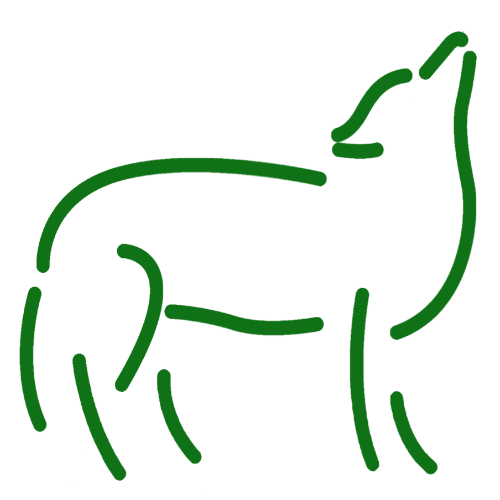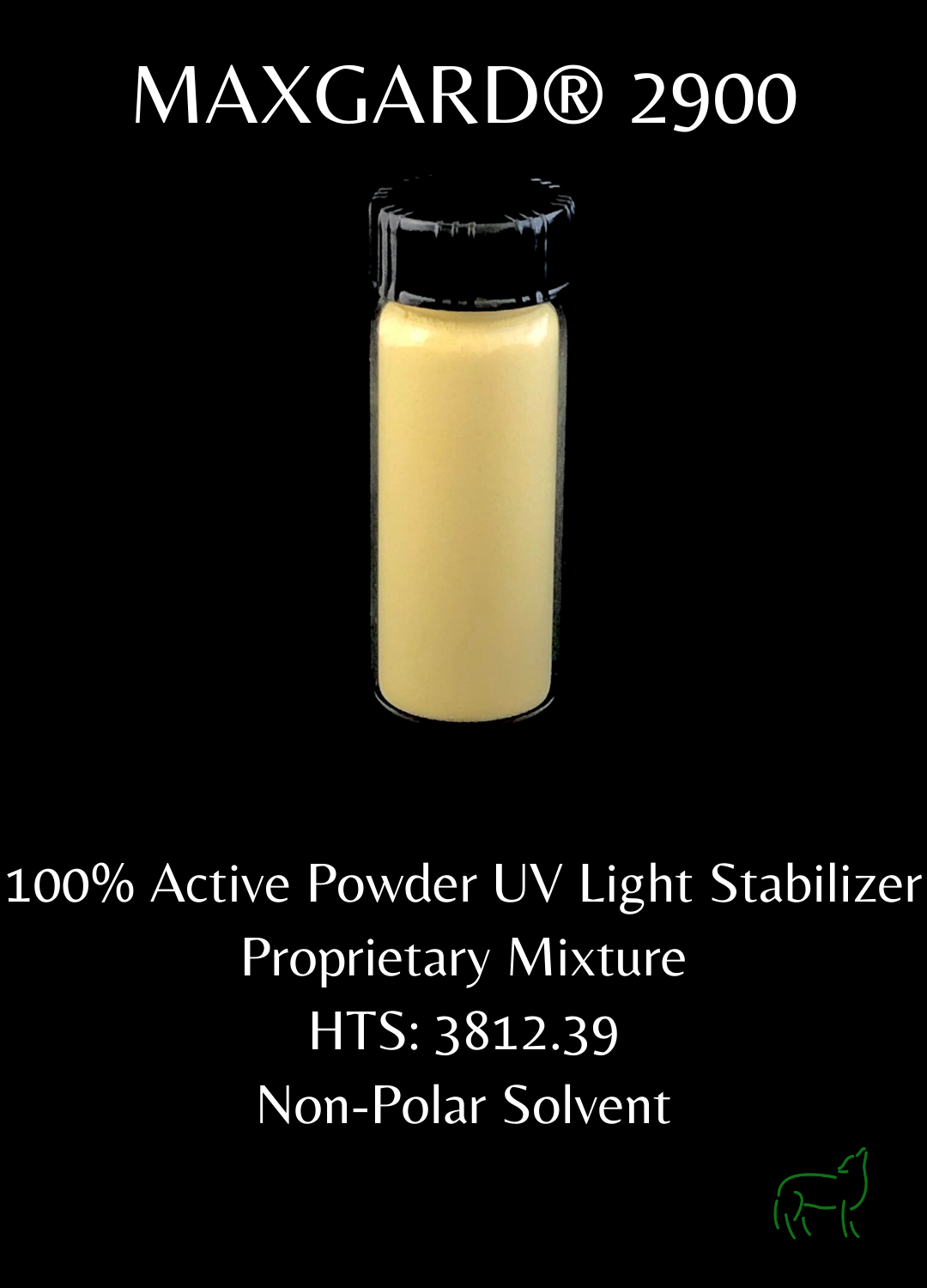Greenhouse Applications
The MAXGARD® UV Absorbers listed below are for green house applications.
2700 is an effective light stabilizer for protecting plastics and coatings from the damaging UV radiation which is a component of natural sunlight. It is very compatible with several polymer materials and is very useful as a UV screen in these products. MAXGARD 2700 has a very broad absorption band which extends into the UV-A range.
2800 is an effective light stabilizer for protecting plastics and coatings from the damaging UV radiation which is a component of natural sunlight. It is very compatible with several polymer materials and is very useful as a UV screen in these products. MAXGARD 2800 has a very broad absorption band which extends into the UV-A range.
2900 is an effective light stabilizer for protecting plastics and coatings from the damaging UV radiation which is a component of natural sunlight. It is very compatible with several polymer materials and is very useful as a UV screen in these products. MAXGARD 2900 has a very broad absorption band which extends into the UV-A range.
Maxgard® & The Benefits of UV Stabilizers
UV stabilizers play a vital role in preserving not only rubbers and plastics, but all kinds of products. They protect surfaces by significantly slowing down the photodegradation process. UV light causes deterioration in plastics and rubbers that can change them not only visually, but also cause detrimental influence on a multitude of physical and mechanical properties.
In coatings, UV stabilizers lessen the damaging effects of the sun. Adding these stabilizers to a surface preserves the color brightness and the lifespan of UV-sensitive products. But, UV stabilizers are not to be confused with blockers. UV stabilizers don’t block UV light. They create a physical barrier between the skin and UV rays. The most common blockers are titanium dioxide and zinc oxide. Our products compete with the surface material for the UV radiation from the sun.
Since energy is unable to be destroyed, the UV rays taken in by the UV stabilizer have to go somewhere. Our products convert the energy from UV radiation into heat. UV stabilizers transmit the consumed energy by scattering the heat. By doing this, these stabilizers safely release the UV radiation in a way that doesn’t damage the material (s) they protect.
UV stabilizers have great efficiency in protecting materials from UV damage. Stabilizers also have the benefit of protecting against thermal damage. When a project needs protection from the heat, HALS offer both heat and light damage resistance.
Hindered amine light stabilizers, more commonly known as HALS, are a type of light stabilizer. HALS differ from UV stabilizers in the fact that UV stabilizers take in the ultraviolet light and keep it from reaching the plastic, but HALS have a distinct operation that involves free radicals and chemical reactions.
When light hits a surface, it sends energy to the atoms in the plastic. These atoms absorb the energy, which excites their components. This substance takes in alkyl radicals the excited atomic particles produce. The alkyl reacts with the nitroxide to form amino ethers. These ethers then find peroxyl radicals in the material. The amino ethers destroy the peroxyl radicals, and the products of the reaction regenerate the HALS nitroxides. Without neutralizing these alkyl and peroxyl radicals, the material would experience damage through oxidation. HALS work by producing products that look for and "eat" the free radicals released from the material. Without the free radicals, the material does not wear down from photooxidation. After consuming the free radicals, the resulting products produce the components needed by the HALS to work again. By regenerating, these light stabilizers can stop UV damage innumerable times, ensuring their long-term effectiveness.
Because these light stabilizers regenerate themselves, they have extremely long lives plus extended efficiency. By adding HALS, artificial turf could remain bright and green for a decade or longer. Brightly colored playground equipment can stay vibrant for a much longer time, even if it’s baking in the hot sun. Even if there are only low concentrations of these light stabilizers in a material, they have proven to be effective at keeping the polymer protected from thermal wear and photodegradation.
Degradation is a loathsome process that unfortunately occurs in most polymeric applications. It typically leads to changes in both the chemical and physical structure of the polymer, which results in the loss of a number of useful properties. UV degradation of polymers can negatively affect molecular weight, impact resistance, elongation at break, gloss, and color. By integrating UV stabilizers, the occurrence of such damages can slow down considerably.
Degradation problems occur especially in plastic greenhouses. This is because plastic allows UV to pass through it, unlike glass. A plastic film without the proper UV stabilization will break down extremely fast and leave the crop exposed. This means the films have to be stabilized with the correct light stabilizers.
Greenhouses films cling to daylight heat and as a result, the temperature in the greenhouse is higher than the normal temperature during the night. The greenhouses that have UV Polyethylene film experience drastic improvements in the wellness of their plants. Their leaves have brighter colors, and the plants grow at a more constant rate with an increase in energy. The plants are also less prone to getting diseases, and as a result the fruits, vegetables, and flowers became more productive. The UV light stabilizing additives in these greenhouse films seize sunlight and protect the plants from harmful UV radiation.
Our Maxgard® products that are UV light stabilizers work to protect plastics and coatings from damaging UV radiation. The products we make are applications that customers use to put into another product, and each of our stabilizers have unique, effective applications.
Maxgard® 300 is especially useful for decreasing the UV transmittance of polyester window film. Maxgard® 400 is soluble in a wide range of solvents, which allows it to be used in acrylics, polyesters, adhesives, nitrocellulose and other industrial coatings. Maxgard® 600 can be used in plastics (flexible and rigid PVC, PVC plastisols, liquid color formulations), polyurethane coatings, and vinyl and acrylic adhesives. Maxgard® 1800’s application in surfactant-based cosmetics is to protect product color when packed in clear containers and its application in clear gel products is to protect the polymer that gives the gel its structure. MAXGARD® 700 is an ultraviolet light stabilizer which provides good compatibility with numerous polymers (including PVC, polypropylene, polyethylene (LLDPE, LDPE, HDPE) and LDPE/EVA-films) and inexpensively guards against yellowing. Maxgard® DPA-8 is specifically suitable for the stabilization of flexible PVC (PVC-p and PVC plastisols). It can also be used in PUR, polyesters and PMMA.




